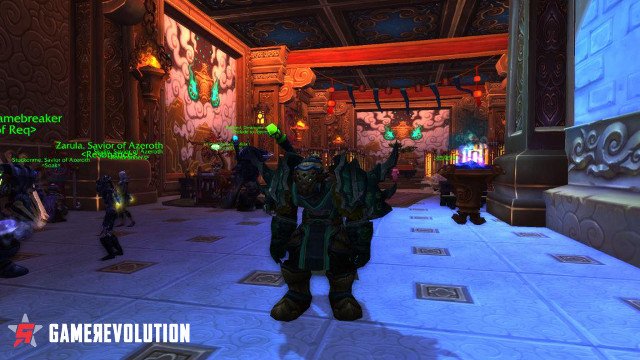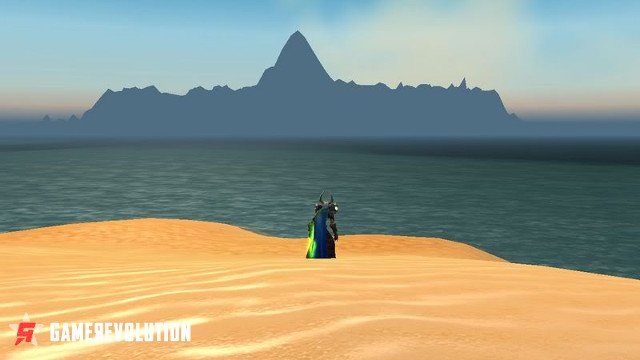[Editor’s Note: This feature isn’t intended to promote the use of private servers. Also, all screenshots and videos below were made by me.]
When World of Warcraft launched in 2004, it was ambitious and full of promise, but very few people had an idea of how popular it would become. Within just a couple years its subscription count would soar past the five million mark, far surpassing what any MMO had done before it, redefining what a subscription-based game is capable of.
During this journey of paramount success, an underground scene has thrived, a scene that’s enjoyed the game in a different light, and invested thousands of hours into modifying World of Warcraft to provide a preferred experience without conventions imposed by Blizzard.
During the past 12 years I’ve spent a fair share of my playing around in private World of Warcraft servers, witnessing their evolution, and learning to understand the perspective of the people who make them.
In this feature we’ll be going over the history of these servers, and look at how their future is in jeopardy.
The Beginning

It wasn’t long after the announcement of World of Warcraft that gamers would try to get their hands on a working copy of the rumored alpha build. Warcraft 3 was incredibly popular at the time, resulting in hype and impatience for the release of Blizzard’s first MMO.
Emulation discussion boards would discuss the topic of the alpha build throughout 2002, proposing ideas on how they can secure a copy of what at the time wasn’t a publicly available product. A few individuals even e-mailed Blizzard hoping they would get a positive response, with no luck.
Roughly half a year later in 2003, a programmer by the name of Skull managed to secure a full client version of World of Warcraft‘s alpha, spelling the beginning of the emulation era. As the legend goes, he was given the copy by someone who worked at Blizzard without the company’s approval. Illegal? Yes. Enough to stop Skull? No.
…in 2003, a programmer by the name of Skull managed to secure a full client version of World of Warcraft‘s alpha, spelling the beginning of the emulation era.
Skull immediately did two things:
- Published the code pubicly to get it in as many hands possible.
- Began reverse-engineering the client.
Warez sites exploded with activity after the upload. Within days it had been downloaded tens of thousands of times, populating such a large number of computers that there was no chance Blizzard could stop the leak even though more than a year of development awaited before its primetime release.
Reverse Engineering

At the time little was known about the back-end of World of Warcraft, so hundreds of hours were invested in trying to understand how the client communicate with a server, in addition to the intricacies of elements such as instancing and logging.
Much of early successes in server decoding was thanks to WarForge, an individual who was well-known in the community for his successful emulation of Battle.net. Word got out quickly that he was making progress, and around that time Blizzard publicly addressed the Skull leak with the following statement:
As many of you know, we are currently conducting an internal Alpha test for World of Warcraft. Our goal for this Alpha test is to provide the best possible experience for players when the Beta launches in early 2004. In order to accelerate the testing process, we recently allowed a small group of external testers to play the game. During this process, a collection of files was leaked to the Internet. While these files contain alpha content from the game, they are not fully playable and therefore do not convey the experience that World of Warcraft will provide when it is released. We are currently investigating this matter and will take serious action against those involved. As always, we appreciate the interest and enthusiasm that players around the world have for World of Warcraft, and we look forward to delivering a massively multiplayer game unlike any you have ever experienced. Until then, we ask that you refrain from sharing any content that doesn’t come directly from Blizzard Entertainment.
The emulation community largely ignored the message, and soldiered on.
Shortly after Blizzard issued a statement, a programmer by the name of Lax published a sandbox environment called “Abyss”, a result of his time spent using packet logs to trace how World of Warcraft‘s servers operate.
The server was only able to house a few players in a small area, but it quickly caught attention amongst the emulation community, serving as the first working model of World of Warcraft private servers. Though a lot of functionality didn’t work, it was promising.
It was at this time that Lax handed his work off to a team including TheDamned, Generin, Codemonkeys, _Psycho, Alita, TheUndying, and Cain. Together they were able to publish the first publicly available private server, named “StormCraft”.
Warcraft Fans Pour In
It would take a while for the emulation build to become something that was stable and functional enough to be ready for the general public. The biggest issue was early servers couldn’t handle a lot of people playing, so there were significant limitations as far as population was concerned, a major element of MMO design.
The first widely available, moderately stable builds arrived in late 2005. At that point World of Warcraft was released, and had recently added the Blackwing Lair raid.
World of Warcraft might have held a reputation for being an “easy MMO” at launch, but only when compared to its incredibly hardcore competition. A level cap grind of 150~ hours, several pieces of gear dropping from each dungeon, and no experience lost on death were virtually unheard of at the time, but made the game just accessible enough to catch on in mainstream.
The biggest issue was early servers couldn’t handle a lot of people playing, so there were significant limitations as far as population was concerned, a major element of MMO design.
With this, private servers naturally became incredibly popular without promotion. Servers such as Rift, Vibe, Khaos, Future WoW, and more cropped up within the three years following World of Warcraft‘s release, providing a wide range of options for players. Most of these servers modified the experience in ways that effectively shortcut progression; players would level faster, hit enemies harder, and find themselves able to clear content alone in a way that simply wasn’t available on the live servers.
Not only would they see high player activity, but many of them were able to pay for their infrastructure and make income by asking for donations in exchange for special in-game items.
Modern WoW Makes Compromises

Fast forward several years to 2011, and World of Warcraft found itself in a slump. Following the end of the Wrath of the Lich King era, Blizzard would make some questionable decisions that lost the attention of a large number of players. Issues with endgame raid design, update frequency, theming, and job homogenization would test the interest of the game’s multi-million player install base, in addition to its reputation as the leading MMO.
During the periods of Cataclysm, Mists of Pandaria, and even Warlords of Draenor, it was common for veteran players to feel deeply disconnected from the game. Nostalgic discussions were frequent, and comparisons often.
A large number of players who entertained the idea of returning to the early days of World of Warcraft would find refuge on private servers, which at the time were still dwelling in the past with builds that ran in Vanilla, Burning Crusade, and Wrath of the Lich King environments. This demand would spur changes in the design of many new servers that were cropping up, as quite a number of them would attempt to emulate the pure form of early World of Warcraft without modifying experience gains and other values, an idea that was previously unpopular.
Made easily accessible and without a mandatory monthly fee, the popularity of these nostalgic servers would balloon in the coming years.
Blizzard Strikes Back

During the period of 2003 to 2015 most private servers were able to operate for several years without facing any legal action. For one reason or another, Blizzard didn’t pay much attention to the hundreds of servers that housed tens of thousands of players. Rumors of takedown requests surfaced every once in a while, but not at a frequency that spurred any major concern.
That was until Nostralius came around in 2015. Arriving at the tail-end of Warlords of Draenor when players were burned out by the expansion’s focus on garrisons and Orc narrative, Nostralius’ pure Vanilla emulation was highly desirable among veteran players, and even their unfamiliar friends who simply wanted to see what classic World of Warcraft was all about.
Running on the most stable code in World of Warcraft emulation history, thousands of players could connect to the server at any given time, providing an experience that was unparalleled. Its popularity soared.
…Nostralius’ pure Vanilla emulation was highly desirable among veteran players…
Over 800,000 accounts would be registered on the server within its first year, causing incredible discussion on social media and forums. Blizzard took notice to it, especially once active players began campaigning for the company to host a legacy server of its own.
After a lot of back and forth, a cease and desist letter was issued to the host of Nostralius, a moment in history that made headlines across many of the biggest websites in gaming. Many World of Warcraft veterans were upset about the news, especially one Blizzard announced that it had no intention of building a first-party legacy server.
The Aftermath

With Nostralius dead, and the threat of costly lawsuits floating about the head of emulation experts, progress would largely flatline in the coming years.
However, that didn’t deter Gummy, a World of Warcraft Vanilla fan who had already been working on a server of his own for two years. Stricken with muscular dystrophy, he would spent tens of thousands of hours preparing the server, which he called “Felmyst”.
Word got out following what happened to Nostralius, and people began talking about it. The popularity built up quickly for Felmyst leading up to its July 2017 launch, at which point Blizzard pulled the trigger: a cease and desist was issued to Gummy on the day of the server’s release, spelling the end of the party before it even started.
The emulation community has largely deflated since the news last week, to a point where it’d be surprising if any large projects crop up in the next couple years. The general feeling is that Blizzard is actively going after private servers, particularly those related to legacy experiences, in a manner that the MMO genre hasn’t seen before.
There’s still hope among players that at some point Blizzard will create an official legacy server. Work on such a project is admittedly challenging, as described by Viper, Nostralius’ project manager:
First, [Blizzard] DO have the source code for Vanilla WoW. Code version control systems are not something new, as it has been a standard in the industry for a long time. With these systems, they can retrieve the code at any given previous backup date.
However, in order to generate the server (and the client), a complex build system is being used. It is not just about generating the ‘WoW.exe’ and ‘Server.exe’ files. The build process takes data, models, maps, etc. created by Blizzard and also generates client and server specific files. The client only has the information it needs and the server only has the information that it needs.
This means that before re-launching vanilla realms, all of the data needed for the build processes has to be gathered in one place with the code. Not all of this information was under a version control system. In the end, whichever of these parts were lost at any point, they will have to be recreated: this is likely to take a lot of resources through a long development process.
The future of Vanilla World of Warcraft appears in jeopardy for the time being.











